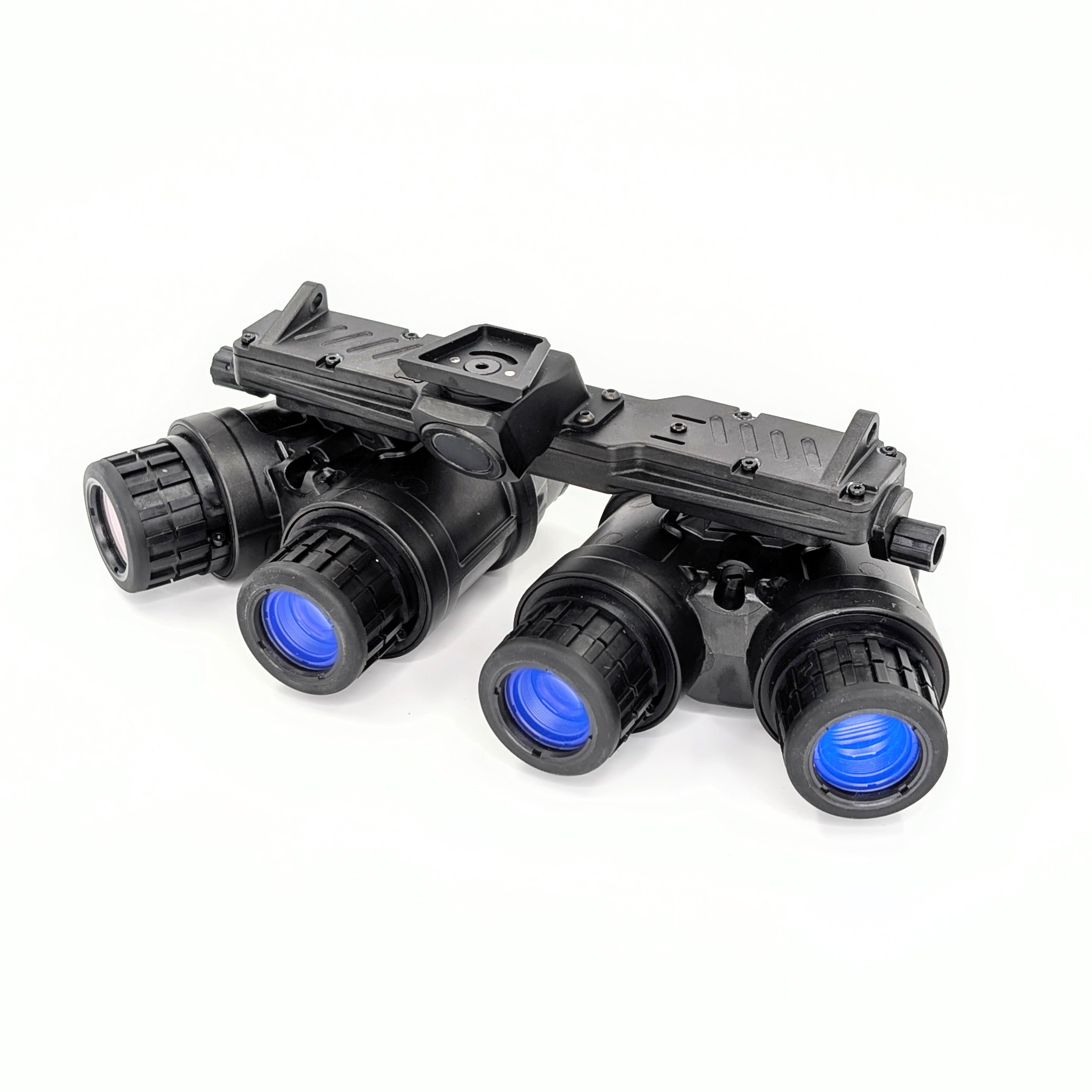The important specs to look at in determining the performance levels of image intensifier tubes are mostly, sort of, consistent across manufacturers (but not really). What is meant by this is that different companies will test at different light levels or different wavelengths, but for the most part they are measured using the same units. For example, resolution will always be in line pairs per millimeter (lp/mm), signal to noise ratio will always be a numeric ratio, photocathode sensitivity will almost always be microamperes per lumen (μA/lm).
Some of you may have noticed certain discrepancies on spec sheets from different companies. The main specifications that are measured differently are EBI and gain. Many European tubes measure specs in SI units whereas US measurements are often imperial. Russian tubes use a mix.
Units:
fc: foot-candle = 1 lumen per square foot
fL: foot-Lambert = 1/π or ~0.3183 candela per square foot
μlx: microlux = 1/1,000,000 lumens per square meter
phot: phot = 1 lumen per square centimeter
Conversions:
1 foot-candle = 10.7639 lux
20 microlux = 1.8581 x 10-6 foot-candles
1 phot = 10,000 lux
(fL/fc)/(cd/m^2/lux) = π
Explaining these conversions would be rather time consuming, but if you have a decent grasp of basic mathematics you should be able to perform all the conversions necessary using the above units and conversions.
Gain:
Gain is a number that expresses the ratio at which the light input measured is amplified in its output. The input is measured in foot-candles (fc) in the US, and lux (lx) in SI units. Output is then also measured differently, using foot-Lamberts (fL) in the US and candela per square meter (cd/m2) in SI units. This will be expressed as fL/fc in the US or cd/m2/lx
We will refer back to the the conversion of (fL/fc)/(cd/m^2/lux) = π, which means that to convert from SI to US gain units, you simply multiply the SI gain number by π, or divide by π to convert to SI.
However one thing to note here is that the conversion is not exact, as the inputs for gain testing are different. US tubes have gain measured at two different light levels:
2 x 10-6 foot-candles (this is the main one people look at)
2 x 10-4 foot-candles
Whereas European tubes are generally measured at 20 microlux
20 microlux = 1.8581 x 10-6 foot-candles
What this means is that while the conversion will be approximately accurate, there will be a margin of error as gain ratios tend to be higher as input light decreases. SI measured tubes will have their gain levels slightly inflated over US measured devices.
As an example of the slightly inflated gain, the datasheet for a specific model of Photonis ECHO tube lists two gain values:
Gain at 2 x 10-5 lx: 8,000 - 12,000 cd/m²/lx
Gain at 2 x 10-6 fc: 25,120 - 37,680 fL/fc
For clarification, 2 x 10-5 lx is 20 microlux. When both numbers are converted to fL/fc, the gain levels are:
Gain at 20 μlx: 25,132 - 37,699 fL/fc
Gain at 2 x 10-6 fc: 25,120 - 37,680 fL/fc
Note that there are some night vision companies that will change the way tube specs are measured in order to make their tubes look better than they actually are, so when comparing different tube models it is important to pay attention to the units used alongside the numerical figures provided.
EBI:
Equivalent Background Illumination is one of the most misunderstood specs that we pay attention to. It is often explained as a number that determines the darkest environment a tube can see in to, which is not wrong but is completely misunderstood. EBI is like when you turn your computer on, your display turns on but is still black. Even though it is still blacked out, you can tell that it turned on because it is a slightly "brighter" black. That brightness would be EBI for a tube.
EBI on US spec sheets is measured in phot, an empirical unit that expresses one lumen per square centimeter. I like to think whoever decided on this unit was intoxicated when the decision was made.
On US spec sheets, EBI is expressed in phot x 10-11. Bruh. That's like measuring halo in kilometers instead of millimeters. Microlux is a better unit for this. All you do is move the decimal over one place.
1.0 x 10-11 phot = 0.1 μlx
What this means is a 0.25 EBI on a European spec sheet is the same as 2.5 EBI on a US spec sheet. For you astronomers out there, make sure the 0.1 EBI tube you're thinking about buying isn't actually a 0.1 μlx tube that would show up as 1.0 EBI on a US measurement.








